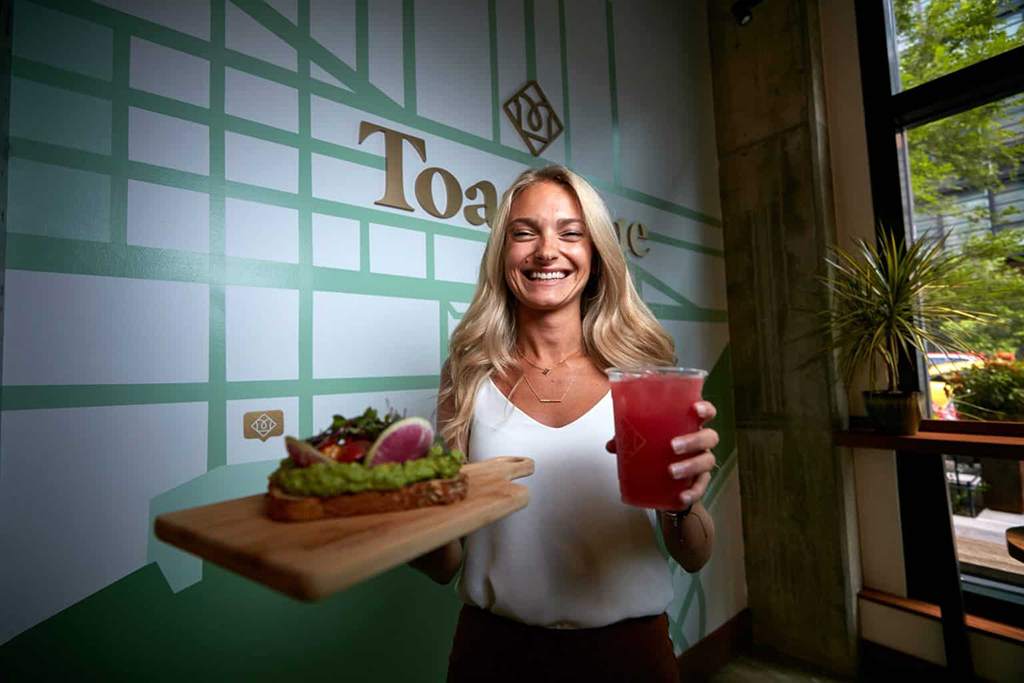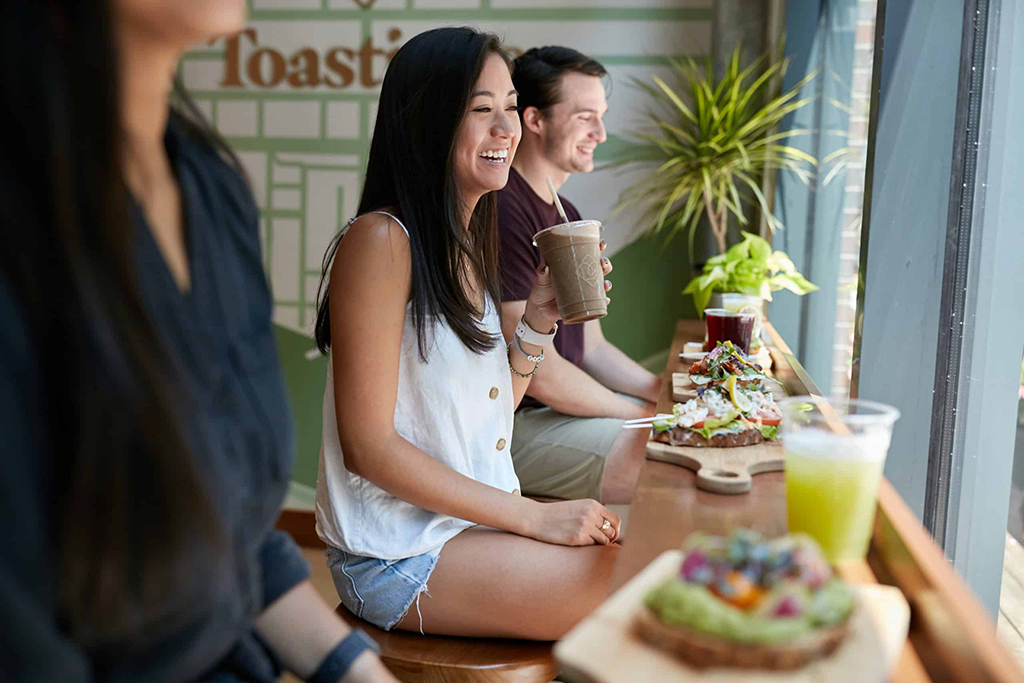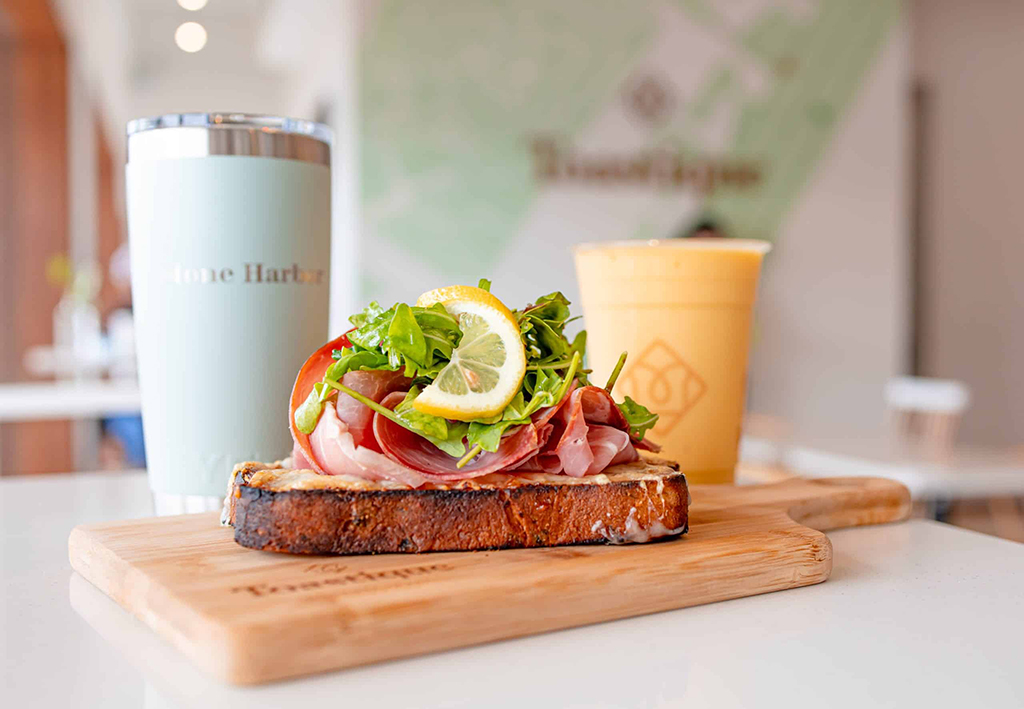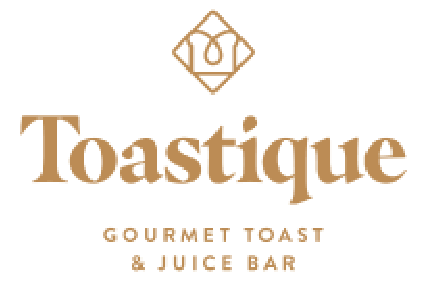HOW MUCH DOES IT COST TO START A HEALTHY CAFÉ FROM SCRATCH?

The economy is on a strong growth trajectory and there’s a flurry of entrepreneurship activity. If you too are considering opening a restaurant or a healthy café franchise, it helps to know how much it would cost. Unless you have a clear understanding of the expenses involved in opening and running a healthy café in your community, it’s unwise to invest.
So, how much does it cost to open a restaurant? The short answer is that it depends on a lot of factors, from the location to delivery model to cuisine. It also depends on whether it will be a fine-dining restaurant, fast-casual outlet, pop-up, or takeout restaurant.
Overall, it’s been estimated that if you lease the building, it will cost you around $3,046 per seat in your restaurant, and if you plan to own the building, it can go up to $3,734 per seat. To understand the costs of starting a restaurant in detail, it would be helpful to break them up into one-time costs and recurring costs.
One-time costs
These are costs that you’ll have to incur just once. There are true one-time costs including the security deposit for the building that you have to incur only once when you open the restaurant. Other costs like crockery, cutlery, kitchen, and cooking equipment will have to be replaced when they start developing wear and tear.
Security deposit
This depends on the location and size of the restaurant. It could be anywhere between $2,000 and $12,000. If you plan to buy the building, then you would need to have around ten percent of the total amount for the down payment.
Business license fees
You’ll have to pay for city licensing fees, local permits, compliance permits for health and safety, and liquor permits. These depend on governmental rules and could be up to $300.
Legal fees
You would need the services of an experienced lawyer and that can cost between $500 and $2,000. Your lawyer will ensure that your restaurant is compliant with local laws and formalize the ownership structure. Make sure that you run all your paperwork by your lawyer before you commit to anything.
Buildout/remodeling costs
You may have to remodel the space, especially the kitchen, to suit your needs. The seating area will also need investments if you opt for a fine-dining restaurant. These costs can add up to around $350,000.
Kitchen and cooking equipment
If yours is a small restaurant, you might be able to do it for under $50,000. It can cost you more than $150,000 if you have a larger kitchen. To reduce your restaurant costs, you can always buy second-hand equipment from restaurants that have gone out of business.
Tableware and furniture
These are expected costs if yours is a dine-in restaurant. These might cost you around $8,000 on average for a new restaurant.
Payment technology
To keep track of payments, inventory, and orders, you would need a point-of-sale system. This can cost you around $20,000 depending on the model and make you choose.
Marketing
One of the most underrated aspects of restaurant expenses is marketing that includes the initial signage and advertising. To increase brand awareness, it might take up to $30,000, and that’s just to get started!

Recurring costs
These are the associated recurring expenses of running a restaurant. Most of these will fluctuate depending on your size and location.
Lease payments
The most important of all recurring costs is your monthly lease and it could range from $2,000 to $12,000 or more, depending on the neighborhood where your healthy café is located. The lease will also go up by a small percentage every year. This is another reason why you should negotiate well in the beginning.
Salaries
The number of your employees and the size of their salaries will depend on the model and size of your restaurant. Managers might need up to $50,000 in salaries whereas head chefs would demand up to $1,800 per week. If yours is a takeout or pop-up restaurant, you would be saving considerably on these costs.
Food and beverage expenses
Your food costs will depend on your menu, which should be based on your target audience and location. You can negotiate with your suppliers and buy in bulk to lower the expenses. You can also go for a satellite license for liquor whereby a brewery, distillery, or winery will designate you as a satellite facility to sell their beverages.
Utility bills and insurance fees
These include electric, water, phone, gas, internet, trash removal, and internet charges and can add up to around $2,500 per month. You’ll also have to incur the cost of insurance and permits and licenses.
Ongoing Marketing
Whether you choose to advertise on hoardings, radio, newspapers, or social media, you would have to consistently spend every month. If you have an agency handling your advertising, you’ll have to pay retainer fees every month.

Owning a Healthy Café Franchise – The more sensible option
Even with all these one-time and recurring costs, there’s no guarantee that the restaurant will succeed. There is immense competition in the industry, which will force you to increase your marketing expenditure or cut down on your prices. But there are no such major risks when you choose to partner with a healthy cafe franchise.
To begin with, it would be a proven concept. You don’t have to start from scratch when you invest in a healthy café concept like Toastique that consumers are familiar with. Secondly, consumers would be aware of the product range and you don’t have to needlessly spend on marketing. Toastique, for example, has thousands of followers on Instagram, allowing them to advertise new products and menu offerings for free just using word of mouth and highly Insta-worthy photos! (Of course, our Franchise Owners also receive comprehensive marketing support from our executive team – something else an independent healthy café owner wouldn’t have access to.)
Most importantly, with a proven franchise brand like Toastique, you’ll have a dependable and proven business model. With comparatively short buildout and ramp-up time and multiple revenue streams including dine-in, carryout, delivery, and catering, not to mention the minimal need for staff and equipment, you’ll be reducing both one-time and recurring costs while increasing your income.
If you’re an entrepreneur planning to get into the restaurant sector, it makes immense sense to go with a proven concept. As Toastique’s Franchise Owners have found out, the brand’s delicious toasts and cold-pressed juices are finding new audiences every day. Click here to know more about how you can get in on this proven and profitable healthy café concept.
